5 Best Resistance Band Chest Exercises Explained
Author:
Unlock your full potential by engaging with our experts and community! Have questions about your fitness journey or looking for expert advice on weightlifting techniques? Don’t hesitate — leave a comment below and Ihor Shymechko will provide a personalized answer and insights to help you reach your goals.
Torokhtiy is reader-supported. Some links are affiliate links, and we may earn a commission at no extra cost to you. See our disclosure page for details.
The chest muscles are one of the primary muscle groups in your body, and they’re responsible for executing many movements and enhancing your body’s aesthetic looks. Most people assume that to train your chest; you need to go to the gym and lift heavy weights.
However, that’s not entirely true. That’s why we’ve dedicated this article to resistance band chest exercises, and we will be discussing their benefits, how you can do them and what kind of equipment you need to perform them.
Hopefully, by the end of this article, you will be convinced that chest exercises with bands are just as effective as the ones you perform with weights in the gym.
Now, without keeping you waiting any longer, let’s get started.
Resistance Band Chest Exercises: Yes or No? – It can help you increase flexibility and range of motion while strengthening your upper body and providing you with a great workout. Furthermore, they give you a way to train everywhere.
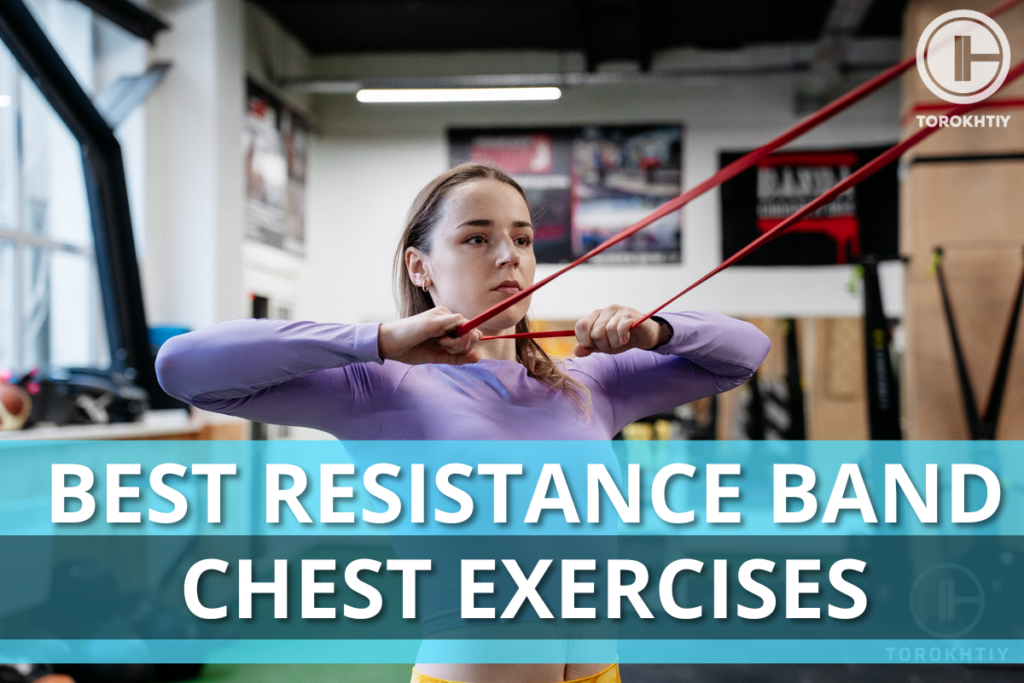
5 Best Chest Workouts with Resistance Bands
You should consider doing chest exercises with resistance bands for many reasons. First, resistance bands are a great way to get some variety to your training sessions and target your muscle differently, compared to the standard lifting exercises such as chest press.
Additionally, they’re a piece of terrific training equipment to have at your disposal in case you’re traveling and or you simply can’t get to the gym but would still like to get a workout in.
A chest resistance band workout can consist of many exercises, but unfortunately, most people are unaware of how to do them. That is why the following paragraphs will be dedicated to chest exercises with resistance bands and the right way to perform them.

That way, the next time you’re stuck in a hotel room or at home and wondering how to do your workout, you can refer to this short guide for advice and guidance.
Let’s take a look at the five best exercises for a great resistance band chest workout.
1. Resistance Band Chest Press
We cannot talk about resistance band workouts for chest without mentioning the holy grail of chest exercises – the chest press. It’s one of the best exercises for isolating the triceps and the chest while at the same time minimizing the stress you put on the shoulder.
In order to do it with a resistance band, you either have to lie on the floor with the band behind your back, or you need to lay on the bench and again place the band behind your back so that you can create resistance by laying on top of it.
When performing this exercise, it’s vital to focus on extending the elbows and keeping your upper back straight while using only the chest and triceps muscles to perform the movement. A step-by-step walkthrough will go like this:
- Take a resistance band with the kind of resistance you’re comfortable working out with
- Wrap the band around your upper back and grip the loops as handles
- Lay down (either on the floor or on a bench)
- Then extend your hands up and down while maintaining your back straight and focus on using your chest and tricep muscles.
2. Resistance Band Crossover Fly
This is a variation of the fly that has you crossing your arms over one another at the end of the movement. By doing so, the range of motion leads to more muscle tension and makes the exercise a tad more effective. When performing the exercise, it’s a good idea to change which arms crosses over which in order to maintain symmetry. Let’s take a look at it step-by-step:
- Find a way to secure the band – either on a door or using a stationary post of some kind.
- Step away and face away from the post and then grab both ends of the resistance band to use as handles.
- Slowly walk away until you feel tension.
- Raise your arms to the sides with your palms facing forward.
- Have them slightly bend at the elbows and extended.
- While your arms are straight and up, move them across the chest in a kind of circular motion until you feel your pecs flexing.
- Hold for a second and return to the starting position with your arms at the sides.
- Repeat for as many reps as needed.
You can use this video to reference how the entire exercise is performed.
3. Resistance Band Fly
One of the most popular chest exercises and one that you will see everyone in the gym doing on the cable machine. It’s great because it isolates the pectoral muscles and helps you specifically target them.
It’s quite similar to the exercise we just discussed. However, this one keeps the tension for a little less time and does require for you to make a contraction at the end of the movement.
When performing any kind of fly variation, it’s vital to remember to keep your back and shoulders straight. That will enable you to keep the front of the shoulder out of the exercise as much as possible, making sure that you can isolate the pectoral muscles. The steps to doing a resistance band fly are pretty simple:
- Attach the band to your door or to any post.
- Then step forward and turn away from where you attached the band.
- Grab the two ends of the resistance band to use as handles and step away until you feel tension.
- Raise your arms and align them to your chest height.
- Bring both of your arms inwards, slowly and controlled, until they meet in the middle of your chest.
- Release the tension, return to starting position, and repeat.
Here’s a video showing how to do the movement from start to finish.
4. Resistance Band Incline Press
It might be surprising to you, but it is possible to do the chest incline press with the help of a resistance band. This changing of the angle from low to high tends to put more tension on the upper chest muscles and the front of the shoulders, which makes this exercise a must for athletes that want to develop their chest.
It’s also terrific for improving your scapular stability and control, which can then make you feel stronger when bench pressing or when doing push-ups. Here’s how to do the incline press with a resistance band:
- Anchor the band to your door or to a post, but make sure to tie it down low, near the ground.
- Then step away from the anchor with your back turned to it.
- Once you feel tension, raise your arms until they’re at chest level.
- Press forward, ensuring that your elbows are slightly bent and that you’re pushing through your chest and shoulder.
- Release the tension, return to starting position and repeat again.
To get a better sense of how to perform this entire movement, you can take a look at this short video.
5. Resistance Band Push Up
This one is perhaps the most popular resistance band chest exercise, and you’ve probably seen many people attempt to perform it in the gym. This is a take on the classic push-up, but it’s with increased difficulty thanks to the band that you have to wrap around your back to create extra tension.
As you go lower in the push-up, the tension on them lowers; however, once you try to get up, it increases, matching your strength. Doing this push-up variation increases the forceful muscle contractions, and you can progress on your push-up by doing fewer reps but with higher tension.
It’s a terrific variation that helps you not only work on your chest strength but also on your front shoulders and triceps, and it can be done in various ways depending on the placement of your hands – a wider stance targets the shoulders and the back more, while a narrower stance puts more stress on the triceps.
Here’s how to do the exercises step-by-step:
- Place the band around your back at chest level.
- Go down into a push-up position – back straight, abs contracted.
- Lower down to the ground with control
- Once you’re low enough, push upwards until you get back to starting position.
- Repeat for as many reps as you can.
If you want, you can also take a look at this video that shows perfectly how this exercise is performed.
5 Benefits of Resistance Band Chest Exercises
Now that we’ve gotten you acquainted with some of the best exercises for your elastic band chest workout let’s take a deeper dive and look into what the benefits of using resistance bands for your chest workouts are and why you need to consider adding those variations to your regular gym program.
✅ Great for People Suffering from Injuries
If you’re feeling pain in any part of your upper body and you want to continue training, resistance band chest workouts are a great addition to your physical therapy on your road to full recovery.
In fact, a study showcased that a person who took a shoulder pain shot and worked out with a resistance band felt better compared to someone who only took the painkiller.
Why? Well, strengthening the muscle while the pain is getting subdued by the shot improves your muscle function and helps you feel less pain throughout a longer period. Additionally, if you have some past injuries or muscle disbalances, resistance band training can help you work those out and improve your form in the long run.
Follow us!

Free!
Get a 2-week Weightlifting Program as a bonus for the subscription to kickstart your training plan!

Free!
✅ Helps Improve Flexibility and Mobility
Obviously, weight training has many benefits. However, one of its main disadvantages is the fact that it makes regular lifters rather stiff and less mobile. One way to counter that is by incorporating resistance bands into your training regime.
A 2019 study conducted on rugby players concluded that using a resistance band in their training helped improve the athlete’s range of motion and flexibility.
It’s thought that this occurs thanks to the space that bands create within your joints, which is similar to what occurs when stretching.
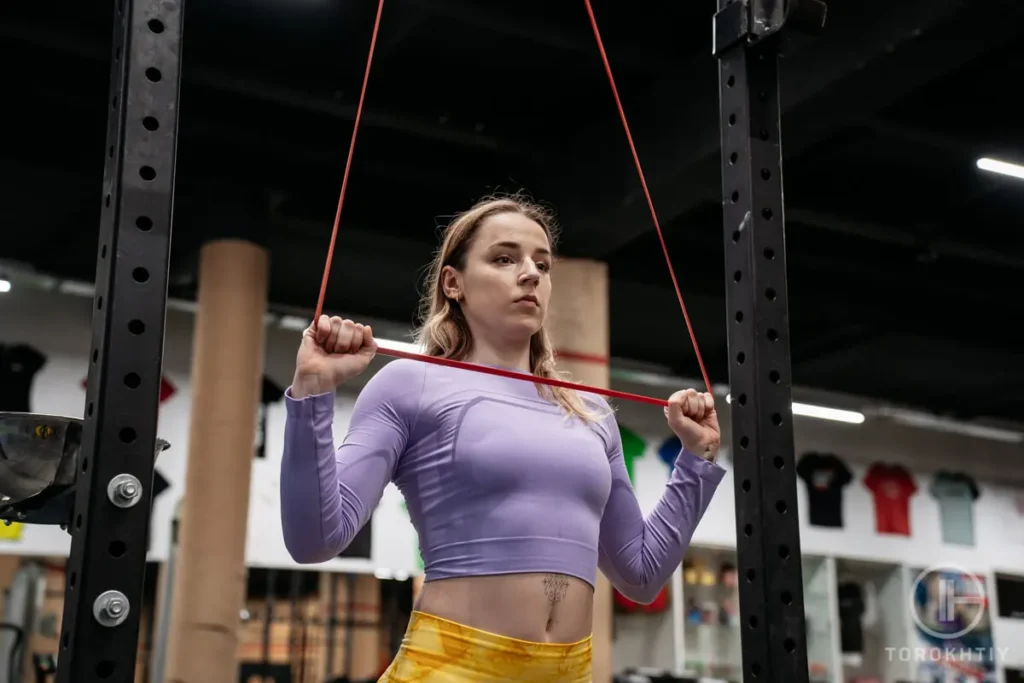
✅ Awesome If You’re Regularly On the Go
If you’re someone who’s always traveling or rarely has the time to go to the gym, having resistance bands at your disposal is a terrific way to increase the difficulty of your workouts and make them more effective for building muscle.
And if you think that using resistance bands is not as effective and won’t lead to as many gains, then this study will prove you wrong. It analyzed the results of more than 200 participants.
It concluded that resistance band training proved similar results when it comes to gains when compared to traditional lifting sessions using machines and free weights.
✅ Makes You More Balanced
When training at the gym, many people underestimate the importance of balance. However, it’s vital for keeping you away from injuries, and it’s particularly valuable for athletes, regardless of which sport they train. Along with that, it improves your overall physical well-being and makes you better at the so-called “functional fitness.”
A study was conducted on older people, and it required them to participate in a resistance band training session for 40 minutes five days per week.
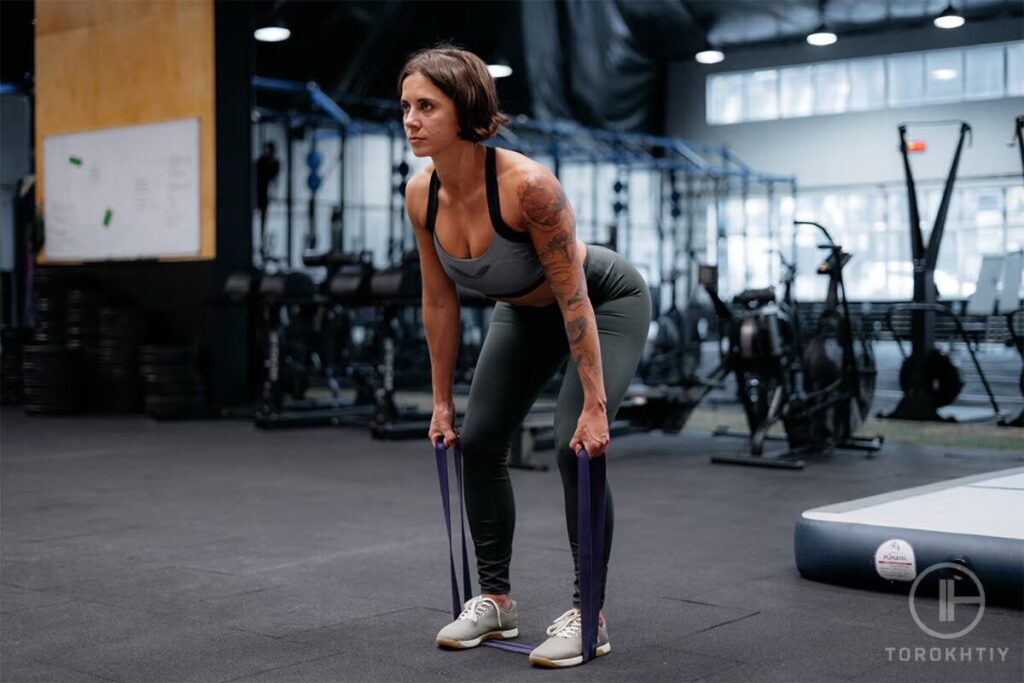
The focus of the workout was to improve posture and balance. Still, by the end of the program, the participants not only showed an improvement in the aforementioned balance and posture, but also reported they felt overall better and had an improved physical function.
✅ Works on Your Functional Fitness
When we say functional fitness, we mean your overall physical condition – your coordination, flexibility, agility, and strength. It’s essentially your ability to perform daily activities such as playing with the kids or chasing around the dog. Resistance band training can help you improve your functional fitness, and there’s quite a bit of evidence for that.
For example, a 12-week study with more than 150 female participants showed that in those 12 weeks of doing resistance band training, the cholesterol and glucose levels of the women improved, and they reported having overall more strength, agility, and flexibility.
A second study reconfirmed those results. For 12 weeks, participants had to train with a resistance band for one hour three times per week. After the study had ended, all participants reported improved strength, flexibility, and blood pressure.
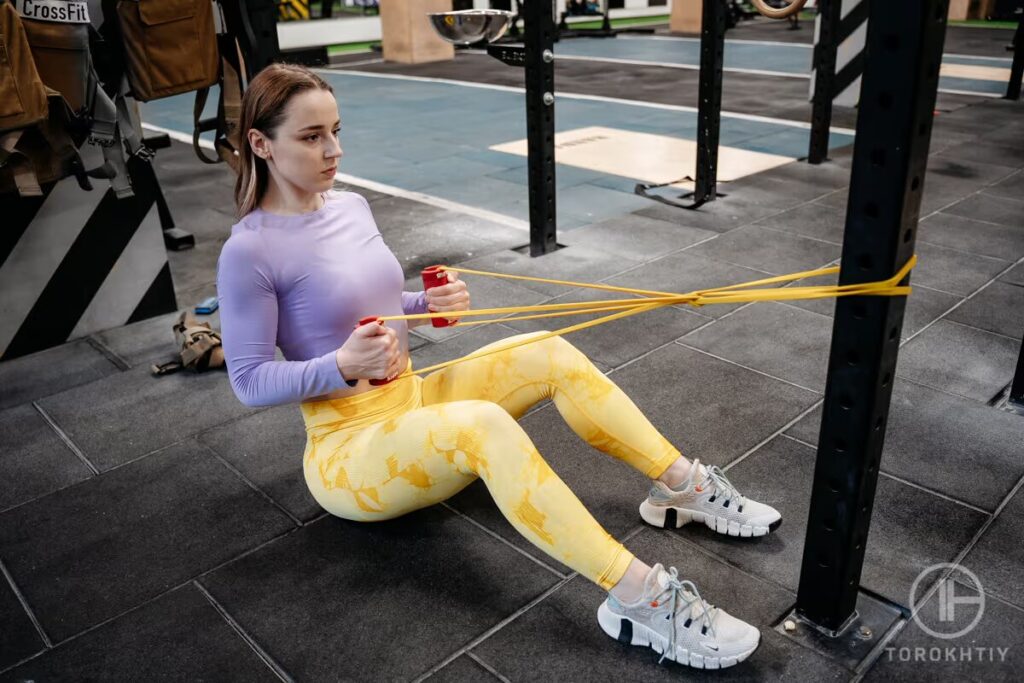
How to Choose the Best Resistance Bands for Сhest Workouts?
By now, you know all about the kind of exercises you can do for your chest with a resistance band, and you also know what the benefits of including them in your training sessions are. And now, after we’ve convinced you they’re worth your time and efforts, let’s take a look at how to go about choosing which resistance bands to get for your chest workouts.
There are many variations of resistance bands on the market. Some of them are better for lower body training, while others are suitable for all kinds of workouts. When it comes to getting resistance bands for chest training, there are a few things you should look for.
1. Durability
It’s better to invest in one set of resistance bands that’s slightly more expensive than to have to purchase a new one every few months. You want to make sure the bands you choose are made of high-quality latex rubber that can withstand pressure and can be used for many years. Avoid getting resistance bands that come with handles and are tube-like, as they offer less resistance and are more prone to snapping, especially if you’re heavier, and will cause more stress on them.
2. Type of Resistance Bands
There are a few types of resistance bands – tube with handles, loop bands, power bands, and more. You want to avoid getting tube resistance bands with handles or loop ones, as they’re less effective for chest training. Instead, you want to go with power bands that come in various weights and provide different levels of resistance. Similarly to weights, there is no one-size-fits-all resistance band, and it’s best if you get a set of them that gives you various resistance levels.
3. If They Have an Anchor
It’s a good idea to look for a set of resistance bands that already has an anchor included so that you can use them comfortably at home or in a hotel. If the ones you’ve chosen lack an anchor, you can buy one separately, and it’s a good practice to do so, as it will make the resistance bands an even more versatile piece of equipment for you.
Rogue Echo resistance bands
If we have to recommend resistance bands, then we will for sure point you to the ones that Rogue Fitness offers. They’re made from durable latex rubber and come in several different colors, each one of which refers to a particular resistance level.
Bands from 0-2 have light resistance and are great for prehab; 3-4 provide normal resistance and can be used for chest workouts and more intense flexibility work and finally, 5-7 offer maximum resistance and are suitable for stronger individuals and can be used both for training sessions and for mobility work.
On the website, you can choose between the various levels of resistance, and our recommendation would be to get at least one pair of 1-2 and one of 3-4. Whether you opt for the maximum resistance depends entirely on your fitness level, as those bands are far more suitable for experienced athletes.

FAQ
How do you activate the chest with resistance bands?
You can activate the muscles in your chest by performing the same kind of movements as you would in your workout but with a resistance band. For example, by doing several push-ups with the added resistance of the band, you will get more activation in the chest muscles, and that will prepare them for heavy weightlifting exercises such as the bench press.
Are chest bands effective?
Chest bands 100% work and are a cost-efficient and convenient way to train your upper body, regardless of where you are. By doing resistance band chest workouts regularly, you can get similar results compared to if you were training with weights and machines in the gym.
How do you target your upper chest with bands?
You can target your upper chest muscles by doing the incline press exercise with a resistance band. For that, simply anchor the resistance band close to the ground and then perform the same movement as you would for a chest press; however, this time, you’re going from low to high, thus targeting your upper pectorals.
Conclusion
As you can see, resistance bands are a great way to get some variety in your workouts, and they will help you improve on other aspects of your training. When it comes to chest workouts at home or when traveling, they’re also the best way to get some resistance and to make your training session more challenging.
Regardless of what some people believe, resistance band chest workouts can be just as effective as the ones done in the gym, as long as they’re correctly structured, and you have enough resistance to make them challenging for your fitness level and body type.
Finally, we wanted to ask all of you whether you’ve trained with resistance bands and what are some of the key benefits that you’ve noticed in terms of performance. Let us know in the comment section below.
Also Read:
- Bench Press With Resistance Bands
- Squats With Resistance Bands
- Resistance Band Tricep Workout
- Resistance Bands vs Weights
- Resistance Band Lat Pull Down
- Bicep Exercises With Resistance Bands
- Back Exercises With Resistance Bands
- Do Resistance Bands Build Muscle
- What Weight Resistance Band Should I Use
- What Size Resistance Bands Do I Need
- Benefits of Resistance Bands
- Resistance Bands Guide
- Resistance Band Rows
- Resistance Bands Guide
References:
- Resistance band chest press // Men’s Health: https://www.menshealth.com/uk/fitness/a753005/resistance-band-chest-press/
- RESISTANCE BAND TRAINING AFTER TRIAMCINOLONE ACETONIDE INJECTION FOR SUBACROMIAL BURSITIS: A RANDOMIZED CLINICAL TRIAL // Journal of Rehabilitation Medicine: https://www.medicaljournals.se/jrm/content/html/10.2340/16501977-2752
- Foam Rolling and Joint Distraction with Elastic Band Training Performed for 5-7 Weeks Respectively Improve Lower Limb Flexibility // National Library of Medicine: https://www.ncbi.nlm.nih.gov/pmc/articles/PMC6370967/
- Effects of training with elastic resistance versus conventional resistance on muscular strength: A systematic review and meta-analysis // National Library of Medicine: https://www.ncbi.nlm.nih.gov/pmc/articles/PMC6383082/
- The effect of scapular strengthening exercise using elastic band on balance and quality of life in the old people // National Library of Medicine: https://www.ncbi.nlm.nih.gov/pmc/articles/PMC8257434/
- Effects of Chair-Based, Low–Load Elastic Band Resistance Training on Functional Fitness and Metabolic Biomarkers in Older Women // National Library of Medicine: https://www.ncbi.nlm.nih.gov/pmc/articles/PMC7919366/
- Photos made by Torokhtiy Media Team.
Why Trust Us?
With over 20 years in Olympic weightlifting, strength training, nutrition coaching, and general fitness our team does its best to provide the audience with ultimate support and meet the needs and requirements of advanced athletes and professional lifters, as well as people who strive to open new opportunities and develop their physical capabilities with us.
By trusting the recommendations of our certified experts in coaching, nutrition, and sports training programming, as well as scientific consultants, and physiotherapists, we provide you with thorough, well-considered, and scientifically proven content. All the information given in the articles concerning workout programming, separate exercises, and athletic performance, in general, is based on verified data.
The product testing process is described in more detail here.
Author: Ihor Shymechko
Pro Olympic Weightlifter, Coach
Best Results: Snatch – 208 kg,
C&J – 240 kg
Ihor has been a professional weightlifter since 1996, boasting over two decades of competition experience. His notable achievements include clinching the European Championship in 2009 and securing a silver medal in the 105kg division at the Senior World Championships in 2011. Ihor represented his country in the 2008, 2012, and 2016 Summer Olympics. After retiring from competitive weightlifting, he transitioned to coaching, leveraging his vast experience to guide athletes who now compete on both national and international stages.



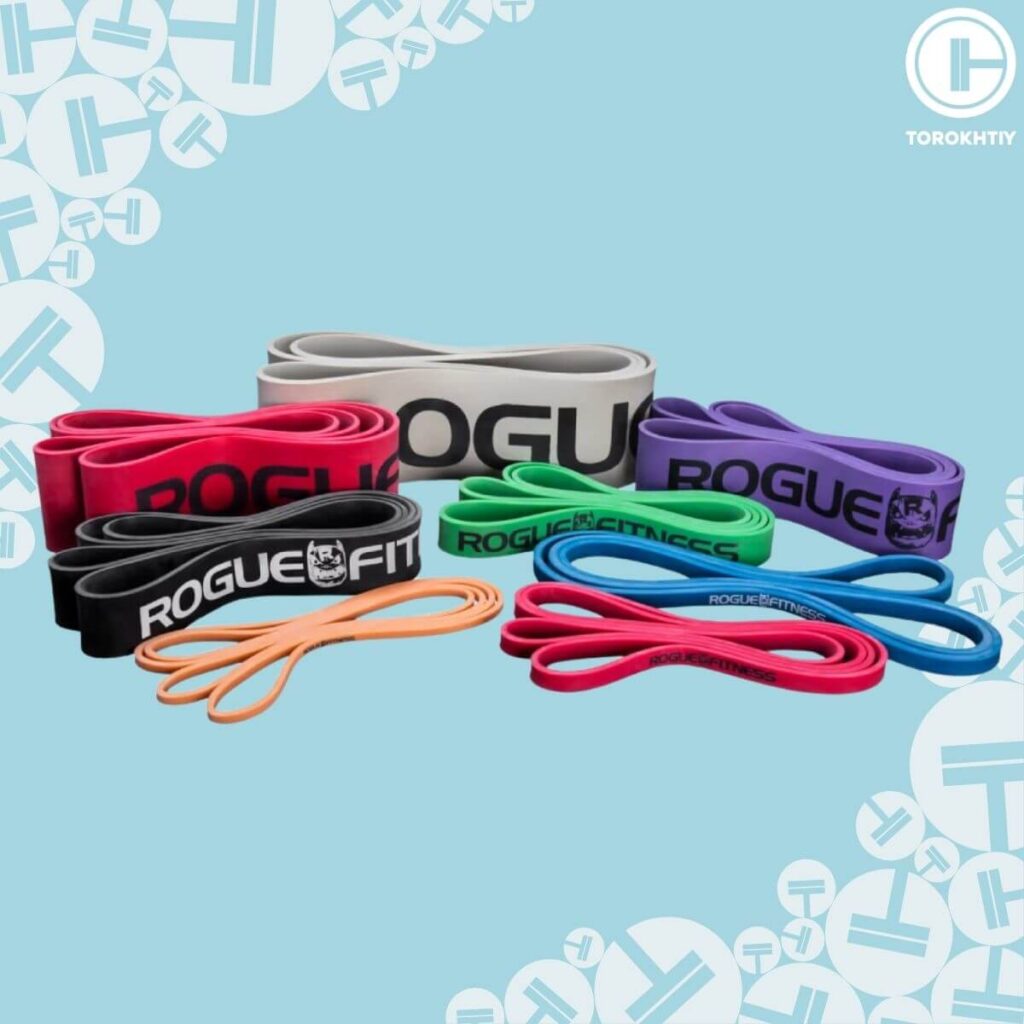
Still have questions after reading our article? Unlock your full potential by engaging with our experts and community! Don’t hesitate — leave a comment below and Ihor Shymechko will provide a personalized answer and insights to help you reach your goals.